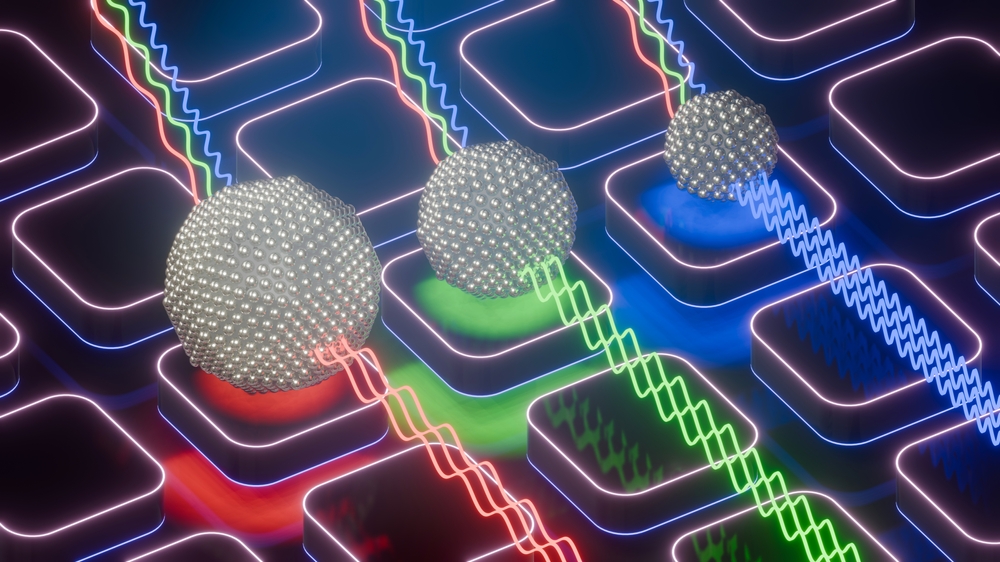How Quantum Dots Are Powering the Brightest Screens
The Emergence of Quantum Dots in Display Technology
Quantum dots are at the forefront of the latest advancements in display technology, offering unprecedented brightness and color accuracy. These nanometer-sized semiconductor particles have unique optical and electronic properties that make them ideal for enhancing screen displays. Quantum dots have revolutionized how we perceive digital images, providing a new level of viewing experience.
Quantum dots are capable of emitting pure monochromatic light when exposed to electricity or light. This property allows them to produce brighter and more vibrant colors than traditional display technologies. Unlike conventional screens that rely on color filters and white light, quantum dots emit specific colors, improving efficiency and color depth.
The application of quantum dots in screen technology is a significant development. These tiny particles are embedded into the display panels of TVs, monitors, and smartphones, creating more vivid and accurate colors. As the world moves towards high-definition and ultra-HD content, the demand for advanced display technologies like quantum dots is rapidly increasing.
As a result, manufacturers are investing heavily in research and development to integrate quantum dots into their products. Companies like Samsung and LG are leading the charge, introducing quantum dot technology in their latest TV models, promising unparalleled picture quality and energy efficiency.

Understanding the Science Behind Quantum Dots
To appreciate how quantum dots are powering the brightest screens, it is crucial to understand their scientific foundation. Quantum dots are nanocrystals made of semiconductor materials, typically ranging from 2 to 10 nanometers in diameter. When these quantum dots are illuminated, they emit light of specific wavelengths determined by their size.
The size-dependent emission is due to the quantum confinement effect, where smaller dots emit shorter wavelengths (bluer light), and larger dots emit longer wavelengths (redder light). This property allows manufacturers to fine-tune the emission spectrum of the quantum dots, producing more accurate and vibrant colors.
Incorporating quantum dots into LED backlights of screens enhances not only brightness but also color accuracy. This is because quantum dots can convert the blue light emitted by LEDs into pure green and red light, resulting in a broader color gamut. This technology significantly surpasses the capabilities of standard LCD and OLED displays.
Furthermore, quantum dots are incredibly stable and have a longer lifespan compared to organic materials used in OLEDs. This stability helps maintain the brightness and color accuracy of the display over time, making quantum dot displays a more durable option for consumers.
The Impact of Quantum Dots on Screen Brightness
Quantum dots have a profound impact on screen brightness, making them the preferred choice for high-performance displays. The way quantum dots enhance brightness is by efficiently converting light into an intense and focused color spectrum. This efficiency reduces the need for high energy input, making screens both brighter and more energy-efficient.
Compared to traditional displays, quantum dot screens offer higher nits, a measure of brightness. With increased nits, screens are easier to view in bright environments, such as outdoor settings or well-lit rooms. This feature is particularly beneficial for mobile devices and laptops, where screen visibility is often compromised by ambient light.
The ability of quantum dots to provide consistent brightness levels across the entire screen ensures a uniform viewing experience. This consistency is critical for applications where color accuracy and brightness uniformity are essential, such as in professional photo and video editing.
As manufacturers continue to refine quantum dot technology, we can expect even more advancements in screen brightness and energy efficiency. This progress will likely lead to a new generation of displays that set the standard for quality and performance in consumer electronics.
Future Developments in Quantum Dot Technology
The future of quantum dots in screen technology is promising, with ongoing research focused on further enhancing their performance and applications. One area of development is the use of perovskite quantum dots, which have shown potential for even higher brightness and color purity.
Researchers are also exploring ways to make quantum dot technology more environmentally friendly by developing less toxic materials. Traditional quantum dots often contain cadmium, a heavy metal with environmental and health concerns. The shift towards cadmium-free quantum dots is a significant step towards sustainable display technologies.
Another exciting prospect is the integration of quantum dots with flexible and foldable display technologies. As the demand for flexible screens grows, quantum dots could play a pivotal role in creating bendable, high-performance displays for new-generation devices.
In conclusion, quantum dots are not only powering the brightest screens today but also paving the way for future innovations in display technology. With continuous advancements, quantum dots are set to redefine our digital viewing experiences, making screens more vibrant, energy-efficient, and environmentally sustainable.
Conclusion
Quantum dots have emerged as a transformative force in display technology, offering unparalleled brightness and color precision. By harnessing the unique properties of these nanocrystals, manufacturers are creating screens that not only deliver stunning visuals but also promote energy efficiency and durability. As research and development in quantum dot technology continue, we are on the cusp of a new era in screen displays, characterized by enhanced performance and innovative applications.